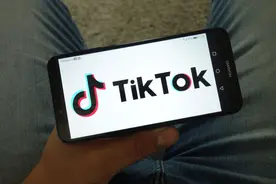In the first half of 2022, Chinese enterprises going to sea seem to have a hard time.Under the background of slowing growth and intensifying competition in the stock market, finding new channels and markets has become the biggest problem facing them.Some people are still waiting and hesitating, but others have stepped into the step of identification.1.The penetration rate of its incremental categories found in the surrounding of giants has increased rapidly, the consumer population has become younger, and the e-commerce infrastructure has become increasingly perfect.At present, Southeast Asia is still one of the regions with the highest "cost performance"."The market capacity of Southeast Asia is very large.From some data we have obtained, the sales volume of the whole Southeast Asian skin care and cosmetics market is about 25.3 billion dollars.Indonesia, as the most populous country in Southeast Asia, has an online and offline capacity of about 8 billion dollars (annual sales volume) 。 In terms of population, Southeast Asia has a large market population, including nearly 300 million in Indonesia, 100 million in the Philippines, and many in Thailand and Vietnam.Therefore, we think that from the perspective of market share, population and market demand, this is a large enough market that is worthy of further cultivation." Liao Yige, head of HEBE Beauty E-commerce, told Hugo Cross Border.The huge market has left a huge gap.At present, the Southeast Asian market is facing the demand for skin care upgrading.It is reported that the humid and hot climate in Southeast Asia is easy to lead to makeup removal, so users need to hold makeup for a longer time without makeup removal.At that time, few European and American or domestic brands developed products specifically for such needs.In 2018, HEBE Beauty saw the differentiated demand from Southeast Asian markets and quickly established local product teams in Southeast Asian countries.Different from the "from the inside to the outside" sea going form of most Chinese cosmetics, Y.O.U (beauty brand under HEBE Beauty) is a brand incubated by the Chinese team in Southeast Asia, which is directly rooted in emerging markets based on China's mature beauty supply chain.With differentiated and localized marketing, Y.O.U has been launched in Indonesia since the end of 2018, and has expanded to the Philippines, Malaysia, Thailand and other countries, covering nearly 40000 points.Insight into the market demand, use the huge blank market and women's wear brand NOWRAIN.As a sea going brand under Vipshop, NOWRAIN has profound e-commerce operation capability, and its mature supply chain is also its huge advantage.Lin Zhibin, the general manager of NOWRAIN, told Hugo that both the domestic and American markets will show two characteristics: first, many clothing brands have a life cycle of 20 to 30 years.Consumers in the United States, Britain and China will like to pursue novelty and fashion, which means that any new brand will have opportunities to do business in any market; Second, no matter which market, the clothing market is fragmented.Take the American market as an example.Although there are many clothing giant brands, their share rarely exceeds 2%, which is very fragmented.For new brands, there is a chance to compete with these giants."According to our observation, in the current macroeconomic environment, whether consumers in the United States or Britain have their wallets tightened, they will prefer to buy something with higher cost performance and greater functionality, or
-
Home
-
Product
SolutionsmanagementUnified management of multiple mobile phones and accounts
Marketing automationUse scripts instead of manual automation to run APP applications
Self-developed scriptJavascript can be used to develop all mobile terminal automation operations
SolutionsData monitoringMulti-dimensional monitoring account and peer online red data
analysis reportMulti-dimensional analysis report of data
-
About






Comment Cancel reply